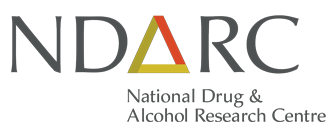
NDARC Technical Report No. 115 (2001)
EXECUTIVE SUMMARY
The 2000 IDRS was expanded from previous years to examine the feasibility of monitoring trends in the market for party drugs using the extant IDRS methodology. This study successfully accessed the appropriate sentinel population of party drug users in South Australia, who were able to provide information about the price, purity and availability of ecstasy and other party drugs, along with self-reported patterns of drug use and associated harms. Key informants who, through the nature of their work or through personal and social contacts, have regular contact with ecstasy users, were also identified. They were able to provide information about these users that was used to validate and contextualise the users' reports. Extant indicator sources relating to ecstasy were identified and accessed, including seizure purity data, telephone alcohol and drug information service data, and National Drug Strategy Household Survey data. Although there are not as many relevant indicator data sources for ecstasy as there are for drugs such as heroin and cannabis, the sources that were identified were successfully triangulated against the reports of users and key informants to provide a comprehensive snapshot of the market for party drugs. Thus, this study demonstrated that the ID RS can successfully monitor illicit drug markets other than those which it has previously been used to monitor, namely heroin, amphetamine, cocaine and cannabis.
The results of the party drugs module of the IDRS indicated that party drug users - a population defined in this study by regular use of tablets sold as ‘ecstasy’, tend on the whole to be young, well-educated, heterosexual, from English speaking backgrounds and likely to be employed or engaged in studies. Most subjects had not had contact with police or other social authorities and did not come from socially deprived backgrounds, and few engaged in crime other than drug dealing. None were currently in treatment for a drug-related problem, and only one had a prior criminal conviction.
Subjects typically began to use ecstasy in their late teens, and frequency of use varied from once per month to three days per week, with 34% of the sample using ecstasy at least once per week. Over half (54%) had recently binged on ecstasy, defined as continuous use for more than 48 hours. Thirty percent of the sample had used more than four tablets in a single use episode in the last six months, and 44% reported that they ‘typically’ used more than one tablet. Consistent with other reports, use of ecstasy was primarily through oral routes, but a substantial minority (16%) had injected ecstasy.
This sample could accurately be described as extensive polydrug users, 40% of whom nominated ecstasy as their favourite drug. The average number of drugs ever tried by subjects (including ecstasy) was 11.5, and an average of 8.5 drugs had been used in the last six months. Substantial percentages of the sample regularly used drugs such as cannabis, amphetamine, methamphetamine, tobacco, nitrous oxide, and alcohol concurrently with ecstasy, and drugs such as cannabis, nitrous oxide, alcohol, amphetamine and methamphetamine to ease the ‘come down’ or recovery period following acute ecstasy intoxication.
On average, subjects reported 10.6 recent physical and 4.5 recent psychological side-effects which they perceived as due, at least in part, to their use of ecstasy. The physical symptoms that were solely attributed to ecstasy use included blurred vision, vomiting, tremors or shakes and stomach pains. Psychological symptoms were generally not attributed solely to ecstasy use. However, the most commonly reported ones included depression, paranoia and anxiety. These side-effects were consistent with those described in earlier reports of ecstasy users, although current Australian research reports a higher incidence of side-effects among users than earlier research conducted internationally (e.g., Hayner & McKinney, 1986; Cohen, 1995; Curran & Travill, 1997; van Laar & Spruit, 1997). Ecstasy-related occupational, relationship and financial problems were also reported relatively frequently by the present sample, and although many of these were minor, some constituted significant disruptions to functioning, including loss of employment, ending of relationships, and an inability to pay for food or rent.
All subjects in this sample were able to comment on the price, purity and availability of ecstasy. The current standard price of a single tablet of ecstasy in Adelaide is $45, and this price has generally remained stable or decreased in the last six months. Ecstasy is reported as very easy or easy to obtain, and is readily available from a number of sources, usually friends, acquaintances or dealers.
Many subjects in this sample were also able to comment on the price, purity and availability of other party drugs, including LSD, methamphetamine and MDA, and to a lesser degree, ketamine and GHB. The results indicated that these drugs are readily available in Adelaide, that the price of these drugs has remained fairly stable, and that the purity of these drugs ranges from medium to high.
In conclusion, patterns of extensive polydrug use and substantial rates of drugrelated harm were reported by this sample of ecstasy users, and these reports were confirmed and validated by the information obtained from key informants. The results of this study also indicate that there is a wide range of drugs on the market in Adelaide, which are reasonably pure and easy to obtain. These results highlight the importance of continued monitoring of such a dynamic market, which can lead to significant financial, social and health-related problems for users, both currently and in the future.
Resources
Reports
Marnie Longo, Rachel Humeniuk, Libby Topp, Catherine McGregor, Richard Cooke, Robert Ali, Suhee Shimamoto
- Overview
- News
- Our team
- References




